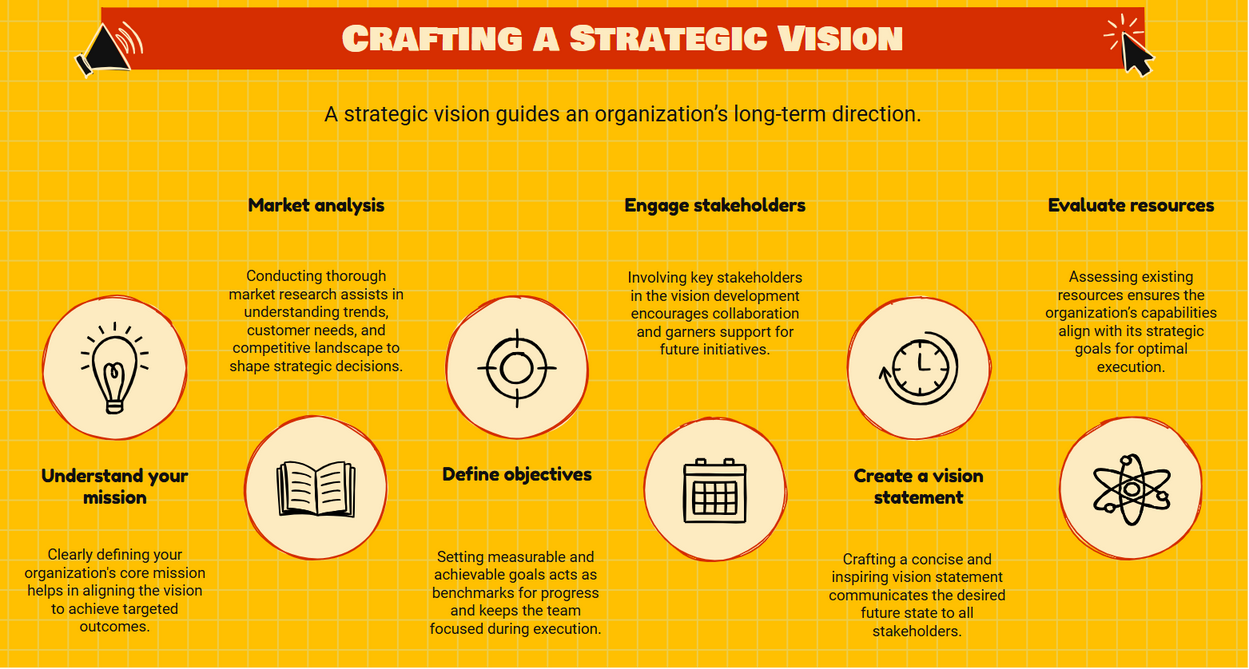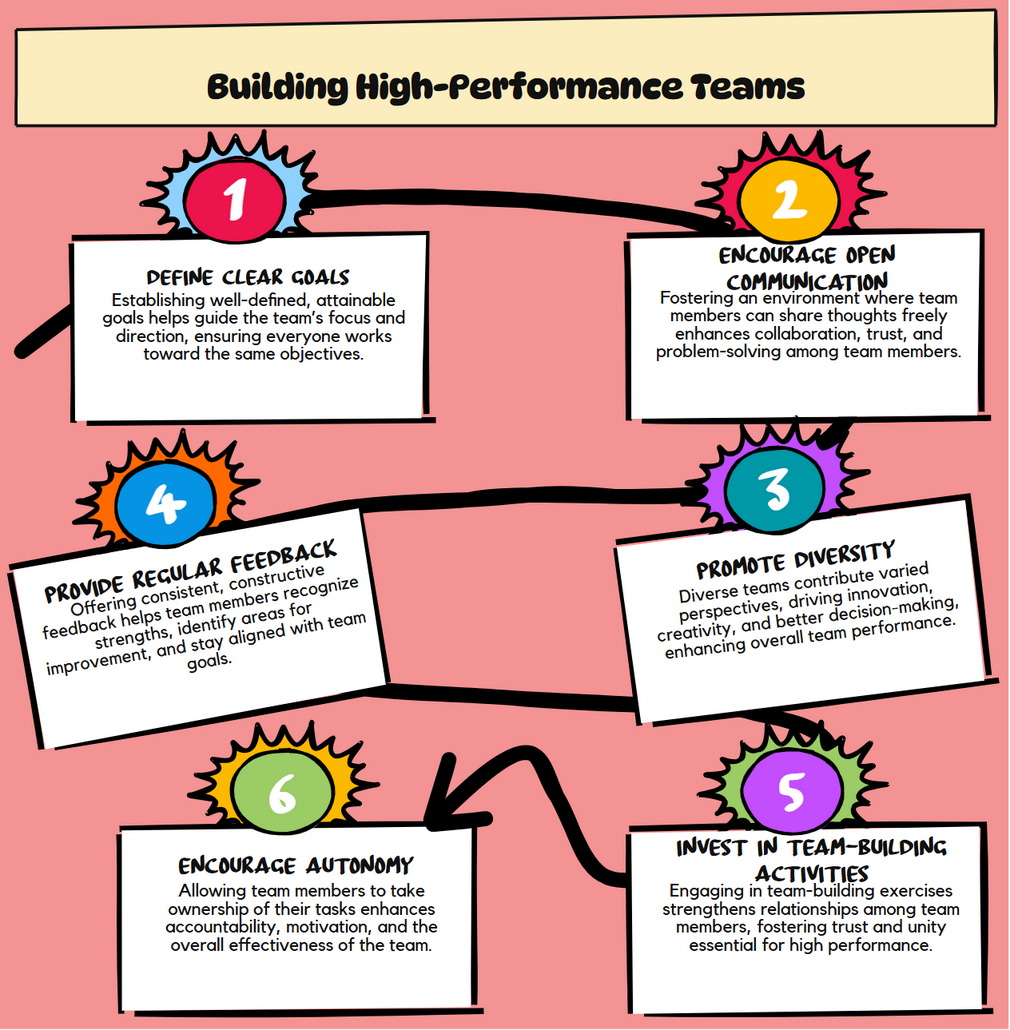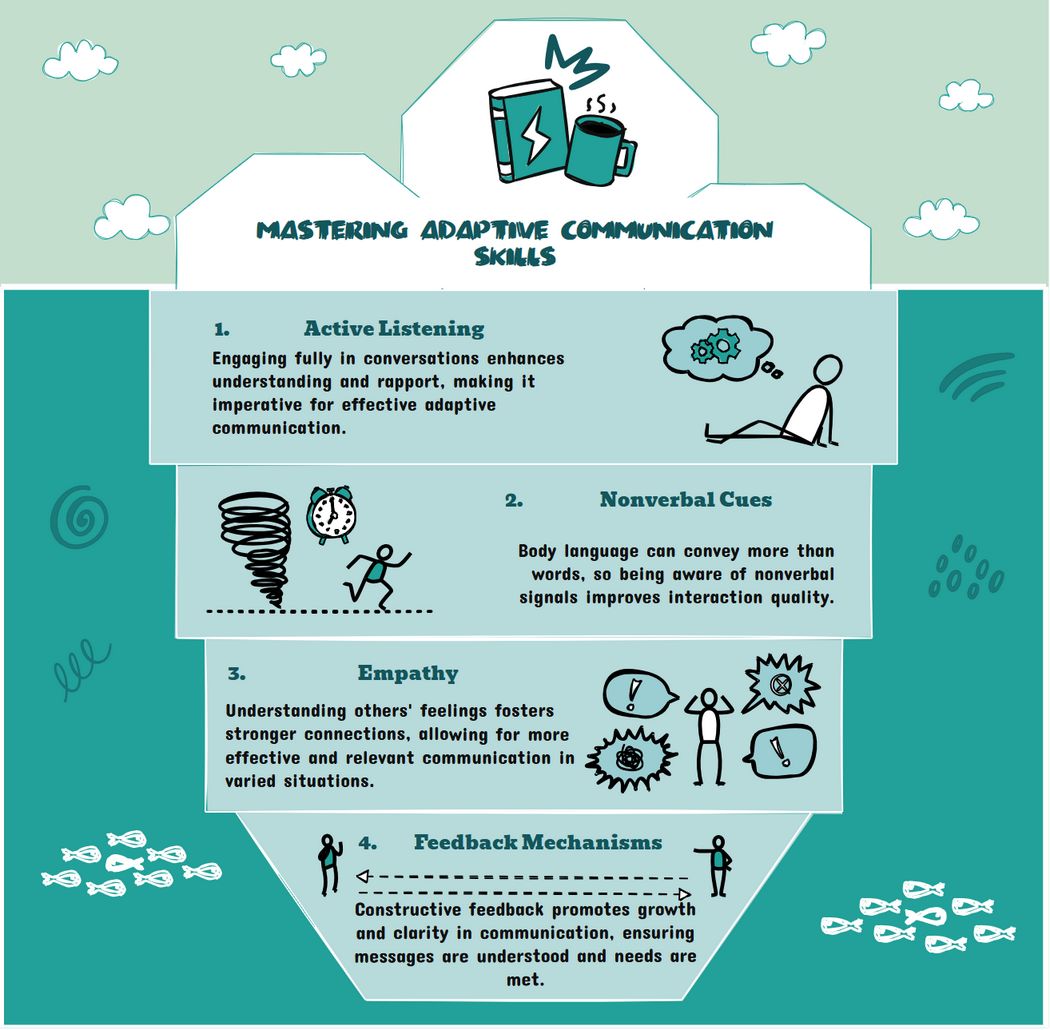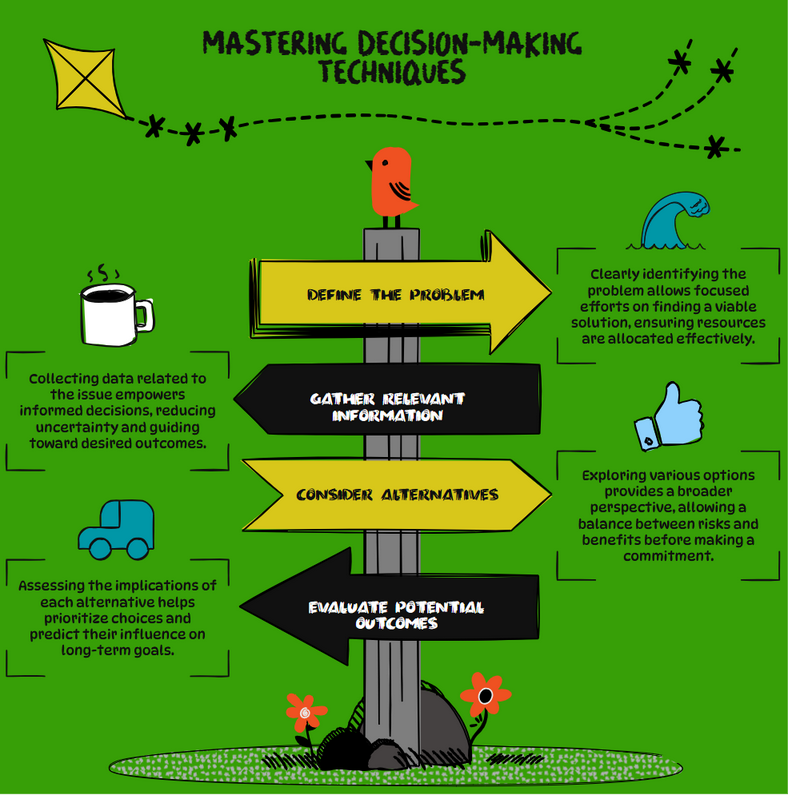
Discover how leaders grow by learning, adapting, and embracing challenges. Explore the key strategies and skills leaders can develop to enhance their leadership effectiveness and inspire others.
In the journey of leadership growth, these seven critical areas hold significant importance and are the key focus of this article.
Introduction
One of the most incredible things you can learn in your career is how to become a better leader. Whether you are a current manager or aspire to become one, effective leadership development is not just about professional growth. It’s also about personal growth. It’ll need your commitment, practice, and the sound strategies outlined in this article.
To be a spectacular leader, you need to earn it. The way you earn it is through experience, learning, and growing from mistakes. Additionally, you must continually refine your craft.
Developing leadership isn’t only about managing people. It’s about leading by example, making tough choices, developing relationships, and fostering an environment that enables everyone to thrive. Fortunately, however, anyone can become a better leader, provided they adopt the correct method and attitude, which we will explore in this article.
Understanding Leadership Development
Leadership development is the practice of enhancing your ability to lead, influence, and inspire others to achieve shared objectives. It’s about being someone people want to follow, not because they have no choice, but because your judgment and your vision are something they trust.
Many people believe that leadership is merely about giving orders or being in charge. However, real Leadership Development is about serving those around you, helping them grow, and creating improvement for your organization and your team.
However, real Leadership Development is about serving those around you, helping them grow, and creating improvement for your organization and your team.
Key Components of Leadership Development
Leadership development encompasses several essential components that enable individuals to become more effective leaders. Good communication skills are necessary because leaders need to share their ideas and listen to others. Self-awareness is another key piece, meaning understanding your strengths and weaknesses so you can improve. Leaders also need to learn how to make wise decisions, especially when facing tough choices or problems.
1. Self-Awareness: The Foundation of Leadership Growth

Enhances Adaptability: Self-aware Leaders are more open to feedback and change, making it easier for them to adapt their leadership style to different situations and team needs.
Self-awareness is the cornerstone of leadership development. It is the key to understanding your strengths, weaknesses, and how you may be affected by others. It’s a journey of self-discovery that leads to better decision-making and more effective leadership.
Recognizing Your Strengths and Blind Spots
Your strengths are your superpowers. You might be terrible at the details of your days, but brilliant at grand strategy. Or you’re great at building relationships but not so good at necessary conflicts.
The truth? Most leaders have at least one key area where they overestimate their ability. Recognizing this is the first step to self-awareness and personal growth. Incompetent people are often the most confident in their abilities — a phenomenon that Cornell University researchers have documented as the Dunning-Kruger effect. But armed with this knowledge, you can avoid falling into this trap.
Your weaknesses are as significant as your strengths. They are the hidden traps that can wreck careers if ignored. However, remember that they also hold potential for growth and improvement. The leadership graveyard is littered with smart people who couldn’t see what everyone else could, but it’s also filled with those who recognized their weaknesses and worked to overcome them.
Soliciting and Processing Feedback Effectively
Feedback is the cornerstone of leadership growth, a precious resource waiting to be harnessed.
Most leaders claim they want feedback, but their actions often contradict this claim. Their body language tightens, their tone changes, and suddenly everyone in the room gets the message: “I’m not open to criticism.” When faced with challenging feedback, it’s essential to resist the urge to defend yourself immediately. Instead, take a moment, express gratitude, and seek clarification. The real magic happens in that pause between receiving feedback and formulating a response.
Developing Emotional Intelligence for Better Decision-Making
Your technical abilities may have landed you the leadership position, but your emotional intelligence is a skill that can be developed and will determine how far you’ll go. The potential for growth in this area is immense, offering you the opportunity to reach new heights in your leadership journey.
EQ is not some fluffy notion — It’s a practical tool that is very much tied to performance. Leaders with strong emotional intelligence tend to make more rational decisions because they can factor in the human elements that influence their decisions. This practicality should reassure you that developing your emotional intelligence is a worthwhile and achievable goal.
2. Strategic Vision Development

Cultivating Long-Term Thinking
Most leaders become mired in the day-to-day mess. They’re putting out fires, responding to emails, and feeling as if they’re struggling to keep their head above water. Sound familiar?
Long-term thinking is not a luxury — it’s the key that unlocks the potential for greatness in leaders. It’s the strategic foresight that guides decisions and inspires teams towards a brighter future, empowering you to take control of your leadership journey.
Start by carving out dedicated thinking time on your calendar. Most successful leaders understand the importance of this and allocate at least 20% of their time to contemplating what lies ahead, rather than focusing solely on what is happening now.
Ask yourself: “What will truly matter in the next five years?” The reality is that most of what weighed you down last week will be a distant memory by next month. Therefore, it’s crucial to focus on the future, rather than the fleeting stressors of the present.
Balancing Immediate Needs with Future Goals
The tension is real. Your team needs direction today, but you need to build for tomorrow.
Here’s what works:
- Create a “now, next, later” framework for every major initiative
- Delegate immediate concerns to trusted team members
- Schedule quarterly strategy retreats away from the office
Creating Compelling Visions That Inspire Teams
A compelling vision has three ingredients:
- It’s ambitious enough to be exciting
- It’s concrete enough to be actionable
- It connects to people’s values and identity
In the following sections, we will delve deeper into the critical areas of leadership development and explore actionable strategies that can help you grow and inspire your team.
Leaders, as visionaries, have the power to paint vivid pictures with their words. They don’t just say “we’ll increase market share by 15%.” They describe what the world looks like when their vision becomes reality.
3. Building High-Performance Teams

Selecting the Right Talent
Reflect on those instances when you had to collaborate with someone who was incredibly skilled, but their lack of teamwork skills posed a significant challenge. It was undeniably a frustrating experience, wasn’t it?
Great leaders understand that attitude trumps aptitude. While technical skills can be learned, instilling a genuine care for others is a more complex task. This realization has the power to transform your hiring practices, empowering you to build a team with the correct values and mindset.
Fostering Psychological Safety

Psychological Safety Is Not About Being Nice.
It’s about creating an environment where team members feel safe to take risks, voice dissenting opinions, and challenge the status quo without fear of humiliation or retribution. Healthy debate and constructive criticism are encouraged, not suppressed. As leaders, it’s our responsibility to foster this environment, not just by being nice, but by actively promoting open communication and risk-taking.
Delegating with Purpose and Trust
Effective delegation is not just about transferring tasks you dislike. It’s primarily about assigning the right work to the right person, a key factor in ensuring efficiency and quality, and then stepping back.
Delegation is not about giving away your work; it’s about sharing your strengths with others.
4. Adaptive Communication Skills

Also read Top 10 Collaboration Tools for Seamless Remote Team Communication
Tailoring Messages to Different Audiences
Great leaders communicate in a way that isn’t ‘one size fits all.’ They naturally adjust their tone, which includes the choice of words, the level of formality, and the pace of speech, based on who the message’s recipient is.
Streamline your communication style and deliver fact-based insights that demonstrate bottom-line impacts when speaking with executives. For tech teams, delve into the details and processes. When working with customer-facing staff, emphasize the benefits of the product or service in a customer’s life and its practical applications in various scenarios.
Mastering Difficult Conversations
The real difference between good and great leaders? Great ones run toward difficult conversations, not away from them.
Many believe preparing for a difficult conversation is about gathering evidence or arguments. However, adequate preparation also means examining your triggers, assumptions, and goals, which helps you stay grounded and open during the exchange.
Becoming an Active Listener
Active listening is not just a skill; it’s a cornerstone of effective team communication. It’s about more than just hearing what someone is saying — it’s about truly understanding and acknowledging their perspective.
Try these techniques:
- Spare the distractions
- Pose follow-up questions and enhance the learning
- Paraphrase to check for understanding
- Observe non-verbal signals that may belie words
5. Decision-Making Excellence

Developing Analytical Frameworks
Have you ever wondered why some leaders so confidently make hard decisions when others can barely make up their mind? The divergence stems from their differing intellectual premises.
Learning how to grow as a leader is a process that requires dedication, perseverance, and ongoing effort. The tools in this handbook – which include honing your communication skills and emotional intelligence, promoting teamwork, and mentoring the next generation – are all part of the path to leadership.
Effective frameworks are not complex. They are simply structured ways of dissecting the problem. The most successful leaders don’t reinvent the wheel each time; they establish repeatable processes, providing them with a sense of reassurance and confidence in their decision-making.
Try this: When you’re facing a big decision, map it out. What are your options? What’s at stake? Who’s affected? What does success look like?
The WRAP method works wonders:
- Widen your options
- Reality-test your assumptions
- Attain distance before deciding
- Prepare to be wrong
Overcoming Cognitive Biases
We’re all in the same boat when it comes to biases. Our brains, in their quest for efficiency, often lead us astray, undermining our best decisions.
Confirmation bias is a common pitfall. It’s the tendency to seek out information that confirms our existing beliefs, often closing our eyes to alternative perspectives.
Overconfidence, a silent but potent threat to good decisions, is the act of overestimating our knowledge and underestimating risks, potentially leading us into perilous territory.
Have you ever found yourself sticking with the first thing you hear? That’s anchoring in action.
And remember that good leadership growth doesn’t just happen on its own. It’s about incremental change and being dedicated to serving your team and organization. Work on one or two at a time, ask for regular feedback, and don’t be afraid to learn from your failures.
The best leaders are those who are always curious, always open to feedback, and eager to learn more. Apply these methods and continue to grow yourself; one day, you too can be the kind of leader others love to follow.
Making Decisions Under Uncertainty
The top performers embrace this reality. They become comfortable with calculated risks.
Here’s what works:
- Set clear minimum thresholds for decisions
- Use the 40/70 rule—act when you have between 40-70% of information
- Establish reversibility criteria—can this decision be undone?
- Create decision deadlines
Learning from Failures and Successes
It’s not about always being right. The key is to learn from every decision, even the wrong ones, and to do so quickly.
Review after each major decision. Not to place blame, but to learn.
Ask:
- What assumptions proved correct?
- Where were we surprised?
- What will we do differently in the future?
Remember, it’s not just about analyzing failures. Success can be an equally powerful teacher, often more so because you’re more receptive to its lessons.
View every outcome as valuable data. This mindset will undoubtedly lead to better decisions in the future.
6. Resilience and Stress Management

Resilience Can Be Learned, Not Just Inherited
Many assume resilience is an innate trait, but research shows leaders can actively develop resilience through deliberate practice, reflection, and training. Leaders can grow stronger in the face of adversity, regardless of their starting point.
Resilience, the invaluable ability to bounce back from tough times, is a skill that empowers you. It not only prevents you from giving up when faced with difficulties, but also equips you to stay calm and keep going, even amid life’s challenges. This skill is particularly beneficial when you’re feeling tense, making you feel more capable and in control.
It is crucial to manage stress effectively because the consequences of not doing so can be severe. Excessive stress can lead to fatigue, anxiety, or even illness, underscoring the importance of effective stress management for maintaining your overall well-being.
Building Mental Toughness
Leadership is not for the faint of heart. We all encounter setbacks, failures, and times that just suck the wind out of us.
Perseverance is the key to success in leadership. It’s not about never feeling low, but about the courage to rise when you can. The most successful leaders I know have all been knocked down by failure – but they didn’t stay down. They rose, stronger and more determined than ever, inspiring us all with their resilience.
Creating Sustainable Work Habits
Building sustainable work habits involves figuring out how to work in a way that allows you to maintain it effectively for a longer duration without getting tired or stressed. It begins with defining specific goals and breaking large tasks into manageable steps, so you don’t become disheartened.
Remember, a short break at work isn’t just a pause; it’s a way to keep your mind fresh and maintain high productivity. It’s also essential to have a routine that signals to your body and mind when it’s time to work and when it’s time to recover.
Developing Recovery Strategies
Recovery isn’t a luxury for leaders—it’s a necessity.
Think athletes don’t rest between games? Of course they do. Their performance depends on it. Leadership is no different.
Your recovery strategy needs three components:
- Physical reset (sleep, exercise, nutrition)
- Mental refresh (hobbies, learning something new)
- Emotional recharge (meaningful connections)
7. Continuous Learning Mindset

Microlearning Outperforms Marathon Sessions
Short, focused bursts of learning (microlearning) are more effective for retention and application than lengthy, infrequent training sessions. Leaders who integrate microlearning into their routines can adapt faster and retain more information.
Embracing Curiosity and Growth
Great leaders aren’t born knowing it all. They wake up every day, excited at the prospect of being wrong, of discovering something new, of seeing the world with fresh eyes.
Think about the last time you were sure about something, only to have that belief flipped on its head. That moment of surprise? That’s the thrill of growth happening, the power of challenging assumptions.
The best leaders, they’re the brave ones. They read books outside their industry. They take courses that scare them a little. They converse with individuals who think differently.
Creating Personal Development Plans
Creating personal development plans is a great way to set clear goals and track your progress in life. It begins with considering what you want to achieve, whether it is learning a new skill, improving your health, or developing better habits.
Once you know your goals, you can break them down into smaller, more manageable steps. Writing these steps down and setting a timeline is crucial to staying focused and committed to your growth journey.
Building Learning Networks
The smartest ones build a web of people who challenge, teach, and support them:
- A mentor who’s walked your path.
- A coach who asks the tough questions.
- Peers facing similar challenges.
- Subject matter experts.
- People completely outside your industry.
Conclusion
Growing as a leader requires deliberate focus on the seven critical areas outlined in this post. Self-awareness forms the foundation upon which all other leadership qualities are built, while developing strategic vision, building high-performance teams, and mastering adaptive communication skills have the power to transform good leaders into great ones. When combined with excellence in decision-making, resilience under pressure, and a continuous learning mindset, these elements create a framework for sustainable leadership growth, empowering you to reach your full potential.
The journey of leadership development is a continuous one, never truly coming to an end. By committing to growth in these seven areas, you’ll not only enhance your effectiveness as a leader but also inspire those around you to reach their full potential. Start by identifying which of these areas presents your most significant opportunity for growth, and take one small, meaningful step toward improvement today. Your evolution as a leader will drive both personal fulfillment and organizational success.
